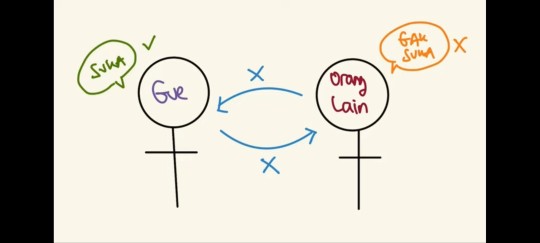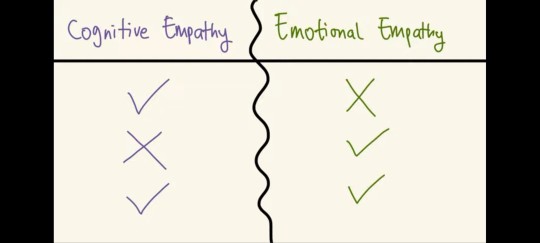#paul ekman
Text
Lie To Me
New Post has been published on https://grahamstoney.com/communication/lie
Lie To Me

One of my favourite TV shows is Lie To Me. Tim Roth plays Dr Cal Lightman, an eccentric expert in deception detection who runs his own consulting business primarily assisting lawyers and prosecutors get to the truth. There’s always a story behind the story, and the trick is to work out who’s lying about it. His techniques combine reading of facial microexpressions, body language, gestures and human behaviour to discern the true emotions of everyone involved; often including his own staff.
Having learned the art of stripping away people’s facades to reveal what is really going on underneath, Dr Lightman has an arrogant edge about him, which is tempered by his paranoia and the painful dysfunctional relationships that he finds himself in. He sees through the white lies that other people spin to soften the real truth from him, and relies on his ability to cut through the protective shields of other people’s personalities to avoid exposing his own vulnerabilities. Dr Lightman was initially driven to study microexpressions by guilt after the suicide of his mother, who fooled her psychiatrist into into thinking that she had recovered enough from her mental problems to gain weekend release from a psychiatric institution; when in fact her aim was to get out just so that should could attempt suicide. The grief surrounding his mother’s death, and his inability to prevent it, is something he still hasn’t really got over.
It is ironic that in his quest to get the truth out of other people, Dr Lightman and his staff often resort to theatrics and outright deception. He will set up a false scenario or make deceptive statements purely to see how the person in question will respond; will they take the bait? Will they react with fear or shame? Will they trip up and inadvertantly reveal the truth? Hell-bent on getting to the truth, he is prepared to lie and cheat in order to do it. Yet because we can see that underneath it all he’s quite a flawed character, he ends up coming across as really likeable. Getting the balance just right to make this happen is where the real acting skill is, and reminds me of one of my other favourite abrasive characters, Dr House in the show House, played by Hugh Laurie.
Aside from the interesting drama that unfolds on the show, Lie To Me has a lot to teach about human behaviour and interactions. The show is based on the scientific work of Paul Ekman, a psychologist who has studied the relationship between emotions and facial microexpressions. Main characters in the show refer to emotional indications in the expressions or mannerisms of the people they are working with, based on Ekman’s work. We see realistic portrayals of guilt, shame, honesty, anger, resentment, scorn and other emotions, cleverly intercut with pictures of known celebrities in the same emotional states while going into ad breaks. Ekman’s research has found that most people are relatively poor at reading facial microexpressions, but can be trained quite quickly to become better at empathising with other people through the use of a microexpression training set. Not only are we all fascinated by lying, and how to detect it, but this basis in real science makes for an intelligent drama.
The relationships between the main characters working with and for Dr Lightman always seem to be coloured by the absolute requirement to be honest with each other. Any deception is immediately picked up, given that they’re all trained to recognise it instinctively. This seems to add to the tension between them, and particularly between Dr Lightman and his most senior colleague Dr Gillian Foster, played by Kellie Williams. Another character Eli Loker, played by Brendan Hines, subscribes to the theory of radical honesty described in the book Radical Honesty by psychologist Brad Blanton, which really blew me away when I read it recently. As a result, Loker often appears abrupt in his interactions with other characters. Blanton’s theory is that most human stress is caused by our unwillingness, inability, or inculcation to avoid being really truthful with other people, especially in difficult circumstances. Sounds great in theory, but Loker’s character suggests that doing so all the time becomes awkward and may even distance us from other people.
All good drama has things to teach about human interactions, but it’s rare that the lessons are as obvious as they are in Lie To Me. Yet it works. I think they’ve got a good balance between plots that are dramatically interesting, and the quite overt inclusion of information about when someone is lying, shameful, or being honest. Sometimes the plots seem a bit far-fetched; Cal Lightman seems to attract way more than his fair share of trouble to feed his underlying paranoia. Occasional plot devices push me beyond the limits of my ability to suspend disbelief and just get lost in the action. But overall, I find Lie To Me fascinating for both the drama and what it has to teach about human dynamics, human interactions, and the art of reading other people’s true emotions; despite what they may say they are thinking or feeling at the time.
#deception#Human behavior#lies#Microexpression#Paul Ekman#psychology#radical honesty#relationship#social psychology#sociology#television#Communication
4 notes
·
View notes
Quote
Emotions can prevent us from having access to all that we know, to information that would be at our fingertips if we were not emotional but that during the emotion is inaccessible to us.
When we are gripped by an inappropriate emotion, we interpret what is happening in a way that fits with how we are feeling and ignore our knowledge that doesn't fit.
Paul Ekman
3 notes
·
View notes
Text
In fact, nowadays computers can surpass us in tasks we usually think are uniquely human.
For example, computers can detect emotions more effectively than humans. Paul Ekman, a famous psychologist, discovered micro-expressions: the minimal movements in your 40 facial muscles that lead to certain expressions. After many years of research, Ekman figured out which of 3,000 different micro-expressions is connected to which emotion. The result is his Facial Action Coding System.
This is how it works: If you put all this emotional data into a computer equipped with a camera, and point it at a human face, the computer can correctly detect the emotion 85 percent of the time. Whereas humans, even with training, got it right only 55 percent of the time!
#book: humans are underrated#AI#Facial Action Coding System#Paul Ekman#emotion#emotion recognition#meanwhile i suck at recognize it as an autistic girl
1 note
·
View note
Text

whats a group of cats called? a clutter!
florida panthers @ boston bruins game 3 | 5.10.24
#anton lundell#eetu luostarinen#evan rodrigues#dmitry kulikov#oliver ekman larsson#sergei bobrovsky#florida panthers#2324#playoffs 24#paul i did not know we switched from mantoman to zone defence#i did not know we could even do that (we suck at zone defence)#actually this is just swarm tactics#it geeks me how perfectly they all come together to box in beecher#even bob is contributing to the huddle <3#go bob!#to which he quickly backs away once he realises he is Imao
11 notes
·
View notes
Text
Psychology courses suck cuz youll find out bout some dope psychologist n be like oh thank god a cool one then you find out theyre dead
9 notes
·
View notes
Text
whenever i read a very thoughtful and compelling work by a deceased academic who was working with outdated models i always think damn i would LOVE to have seen your takes with more up-to-date information
#brian sutton-smith you lived a long life and i'm glad#but i want to see what you would have produced without ekman's stupid fucking universal emotions shit binding you#paul ekman you know what you've done.
14 notes
·
View notes
Text
Mindfulness: How to Call Off the Emotional Attack Dogs
“You want to be able to choose when you become emotional and what you become emotional about.” – Dr. Paul Ekman
“You want to be able to choose when you become emotional and what you become emotional about.” – Dr. Paul Ekman
“You want to be able to choose how you act when you are emotional.”
We are not born with the innate ability to choose when we become emotional. We are not born with the ability to choose how we act when we are emotional. We must learn these skills.
Mindfulness: How to Call Off the…

View On WordPress
0 notes
Text
The book list copied from feminist-reprise
Radical Lesbian Feminist Theory
A Passion for Friends: Toward a Philosophy of Female Affection, Jan Raymond
Call Me Lesbian: Lesbian Lives, Lesbian Theory, Julia Penelope
The Lesbian Heresy, Sheila Jeffreys
The Lesbian Body, Monique Wittig
Politics of Reality, Marilyn Frye
Willful Virgin: Essays in Feminism 1976-1992, Marilyn Frye
Lesbian Ethics, Sarah Hoagland
Sister/Outsider, Audre Lorde
Radical Feminist Theory – General/Collections
Freedom Fallacy: The Limits of Liberal Feminism, edited by Miranda Kiraly and Meagan Tyler
Radically Speaking: Feminism Reclaimed, Renate Klein and Diane Bell
Love and Politics, Carol Anne Douglas
The Dialectic of Sex–The Case for Feminist Revolution, Shulamith Firestone
Sisterhood is Powerful, Robin Morgan, ed.
Radical Feminism: A Documentary Reader, edited by Barbara A. Crow
Three Guineas, Virginia Woolf
Sexual Politics, Kate Millett
Radical Feminism, Anne Koedt, Ellen Levine, and Anita Rapone, eds.
On Lies, Secrets and Silence, Adrienne Rich
Beyond Power: On Women, Men and Morals, Marilyn French
Feminism Unmodified: Discourses on Life and Law, Catharine MacKinnon
Femininity and Domination: Studies in the Phenomenology of Oppression, Sandra Bartky
Life and Death, Andrea Dworkin
This Bridge Called My Back: Writings by Radical Women of Color, Gloria Anzaldua and Cherrie Moraga, eds.
Wildfire: Igniting the She/Volution, Sonia Johnson
Homegirls: A Black Feminist Anthology, Barbara Smith ed.
Fugitive Information, Kay Leigh Hagan
Talking Back: Thinking Feminist, Thinking Black, bell hooks
Feminist Theory: From Margin to Center, bell hooks
Deals with the Devil and Other Reasons to Riot, Pearl Cleage
Pilgrimages/Peregrinajes, Maria Lugones
In Search of Our Mothers’ Gardens, Alice Walker
The Whole Woman, Germaine Greer
Right Wing Women, Andrea Dworkin
Feminist Theory – Specific Areas
Prostitution
Paid For: My Journey Through Prostitution, Rachel Moran
Being and Being Bought: Prostitution, Surrogacy, and the Split Self, Kajsa Ekis Ekman
The Industrial Vagina: The Political Economy of the Global Sex Trade, Sheila Jeffreys
Female Sexual Slavery, Kathleen Barry
Women, Lesbians, and Prostitution: A Workingclass Dyke Speaks Out Against Buying Women for Sex, by Toby Summer, in Lesbian Culture: An Anthology, Julia Penelope and Susan Wolfe, eds.
Ten Reasons for Not Legalizing Prostitution, Jan Raymond
The Legalisation of Prostitution : A failed social experiment, Sheila Jeffreys
Making the Harm Visible: Global Sexual Exploitation of Women and Girls, Donna M. Hughes and Claire Roche, eds.
Prostitution, Trafficking, and Traumatic Stress, Melissa Farley
Not for Sale: Feminists Resisting Prostitution and Pornography, Christine Stark and Rebecca Whisnant, eds.
Pornography
Pornland: How Pornography Has Hijacked Our Sexuality, Gail Dines
Pornified: How Porn is Damaging Our Lives, Our Relationships, and Our Families, Pamela Paul
Pornography: Men Possessing Women, Andrea Dworkin
Pornography: The Production and Consumption of Inequality, Gail Dines
Pornography: Evidence of the Harm, Diana Russell
Pornography and Sexual Violence: Evidence of the Links (transcript of Minneapolis hearings published by Everywoman in the UK)
Rape
Against Our Will, Susan Brownmiller
Rape In Marriage, Diana Russell
Incest
Secret Trauma, Diana Russell
Victimized Daughters: Incest and the Development of the Female Self, Janet Liebman Jacobs
Battering/Domestic Violence
Loving to Survive, Dee Graham
Trauma and Recovery, Judith Herman
Why Does He Do That? Inside the Minds of Angry and Controlling Men, Lundy Bancroft
Sadomasochism/”Sex Wars”
Unleashing Feminism: Critiquing Lesbian Sadomasochism in the Gay Nineties, Irene Reti, ed.
The Sex Wars, Lisa Duggan and Nan D. Hunter, eds.
The Sexual Liberals and the Attack on Feminism, edited by Dorchen Leidholdt and Janice Raymond
Sex, Lies, and Feminism, Charlotte Croson, off our backs, June 2001
How Orgasm Politics Has Hijacked the Women’s Movement, Sheila Jeffreys
A Vision of Lesbian Sexuality, Janice Raymond, in All The Rage: Reasserting Radical Lesbian Feminism, Lynne Harne & Elaine Miller, eds.
Sex and Feminism: Who Is Being Silenced? Adriene Sere in SaidIt, 2001
Consuming Passions: Some Thoughts on History, Sex and Free Enterprise by De Clarke (From Unleashing Feminism).
Separatism/Women-Only Space
“No Dobermans Allowed,” Carolyn Gage, in Lesbian Culture: An Anthology, Julia Penelope and Susan Wolfe, eds.
For Lesbians Only: A Separatist Anthology, Julia Penelope & Sarah Hoagland, eds.
Exploring the Value of Women-Only Space, Kya Ogyn
Medicine
Witches, Midwives and Nurses: A History of Women Healers, Barbara Ehrenreich and Deirdre English
For Her Own Good: 150 Years of the Experts’ Advice to Women, Barbara Ehrenreich and Deirdre English
The Hidden Malpractice: How American Medicine Treats Women as Patients and Professionals, Gena Corea
The Mother Machine: Reproductive Technologies from Artificial Insemination to Artificial Wombs, Gena Corea
Women and Madness, Phyllis Chesler
Women, Health and the Politics of Fat, Amy Winter, in Rain And Thunder, Autumn Equinox 2003, No. 20
Changing Our Minds: Lesbian Feminism and Psychology, Celia Kitzinger and Rachel Perkins
Motherhood
Of Woman Born: Motherhood as Experience and Institution, Adrienne Rich
The Reproduction of Mothering, Nancy Chodorow
Maternal Thinking: Toward a Politics of Peace, Sara Ruddick
Marriage/Heterosexuality
Compulsory Heterosexuality and Lesbian Existence, Adrienne Rich
The Spinster and Her Enemies: Feminism and Sexuality 1880-1930, Sheila Jeffreys
Anticlimax: A Feminist Perspective on the Sexual Revolution, Sheila Jeffreys
Black Macho and the Myth of the Superwoman, Michele Wallace
The Sexual Contract, Carol Pateman
A Radical Dyke Experiment for the Next Century: 5 Things to Work for Instead of Same-Sex Marriage, Betsy Brown in off our backs, January 2000 V.30; N.1 p. 24
Intercourse, Andrea Dworkin
Transgender/Queer Politics
Gender Hurts, Sheila Jeffreys
Female Erasure, edited by Ruth Barrett
Testosterone Rex: Unmaking the Myths of Our Gendered Minds, Cordelia Fine
Delusions of Gender: How Our Minds, Society, and Neurosexism Create Difference, Cordelina Fine
Sexing the Body: Gender and the Construction of Sexuality, Anne Fausto-Sterling
Myths of Gender, Anne Fausto-Sterling
Unpacking Queer Politics, Sheila Jeffreys
The Transsexual Empire: The Making of the She-Male, Janice Raymond
The Inconvenient Truth of Teena Brandon, Carolyn Gage
Language
Speaking Freely: Unlearning the Lies of the Fathers’ Tongues, Julia Penelope
Websters’ First New Intergalactic Wickedary, Mary Daly
Man Made Language, Dale Spender
Feminist Theology/Spirituality/Religion
Beyond God the Father: Toward a Philosophy of Women’s Liberation, Mary Daly
Gyn/Ecology: The Metaethics of Radical Feminism, Mary Daly
The Gods and Goddesses of Old Europe, Marija Gimbutas
Woman, Church and State, Matilda Joslyn Gage
The Women’s Bible, Elizabeth Cady Stanton
Pure Lust, Mary Daly
Backlash
The War Against Women, Marilyn French
Backlash, Susan Faludi
History/Memoir
Surpassing the Love of Men, Lillian Faderman
Going Too Far: The Personal Chronicles of a Feminist, Robin Morgan
Women of Ideas, and What Men Have Done to Them, Dale Spender
The Creation of Patriarchy, Gerda Lerner
The Creation of Feminist Consciousness, From the Middle Ages to Eighteen-Seventy, Gerda Lerner
Why History Matters, Gerda Lerner
A Vindication of the Rights of Women, Mary Wollstonecraft, ed.
The Elizabeth Cady Stanton-Susan B. Anthony Reader: Correspondence, Writings, Speeches, Ellen Carol Dubois, ed., Gerda Lerner, Elizabeth Cady Stanton
The Suffragette Movement, Sylvia Pankhurst
In Our Time: Memoirs of a Revolution, Susan Brownmiller
Women, Race and Class, Angela Y. Davis
Economy
Counting for Nothing: What Men Value and What Women Are Worth, Marilyn Waring
For-Giving: A Feminist Criticism of Exchange, Genevieve Vaughn
Fat/Body Image/Appearance
Shadow on a Tightrope: Writings by Women on Fat Oppression, Lisa Schoenfielder and Barb Wieser
Beauty and Misogyny: Harmful Cultural Practices in the West, Sheila Jeffreys
Can’t Buy My Love: How Advertising Changes the Way We Think and Feel, Jean Kilbourne
The Beauty Myth, Naomi Wolf
Unbearable Weight: Feminism, Western Culture, and the Body, Susan Bordo
The Invisible Woman: Confronting Weight Prejudice in America, Charisse Goodman
Women En Large: Photographs of Fat Nudes, Laurie Toby Edison and Debbie Notkin
Disability
With the Power of Each Breath: A Disabled Women’s Anthology, Susan E. Browne, Debra Connors, and Nanci Stern
323 notes
·
View notes
Text
Empathy:
Feel Deeply, Think Accurately, Act Wisely
Kita akan buka resume ini dengan kutipan:
"Perlakukan orang lain sebagaimana kita ingin diperlakukan."
Kalimat tersebut sering dianggap nasihat empati yang bagus dan sering diterapkan dalam prinsip berempati. Padahal perlakuan yang kita mau, bisa jadi adalah perlakuan yang orang lain nggak mau.

Kalau salah digunakan, prinsip berempati ini justru jadi nggak berfungsi sebagai mana mestinya yaitu untuk melancarkan interaksi sosial supaya lebih efektif.
Empati artinya kita memahami sudut pandang (point of view) orang lain.

Kalau kita melihatnya dari sudut pandang kita berdasarkan prinsip "memperlakukan orang lain sebagaimana kita ingin diperlakukan", justru hal ini berseberangan dengan konsep empati itu sendiri.
Terus kalau prinsip itu nggak tepat, yang tepatnya seperti apa?
Ada prinsip dari bukunya Stephen Covey yaitu 7 Habits of Highly Effective People. Di situ ada prinsip yang bunyinya, "seek first to understand, then to be understood". Pahami dulu pihak lain, dengan begitu kita akan dipahami. Ini adalah prinsip empati yang efektif. Dengan prinsip ini, bahkan dalam berkomunikasi pun kita akan memulai semuanya dari audiens, bukan dari diri kita.

Contohnya dalam mengajar, isi materi bukan datang dari sudut pandang kita sendiri melainkan dari sudut pandang audiens yang mau kita ajarin.
Contoh lagi dalam berkomunikasi, kita berangkat dari orang lainnya dulu.

Asumsi dan ekspektasi itu gak melewati proses memahami pihak lain makanya banyak konflik dan kesalahpahaman yang berpotensi terjadi. Mungkin aja asumsi bisa valid kalau kita punya preferensi yang umum atau cukup sama dengan kebanyakan orang. Jadi secara statistik bisa pas, apa yang kita suka, oh mungkin orang juga suka. Tapi kalau misalnya enggak, kan beresiko jadi kacau, ya?
Dengan proses memahami pihak lain, pilihan tindakan atau ucapan kita akan lebih fit ke orang lain. Kita bisa menentukan cara interaksi yang tepat untuk dia dari sudut pandang dia.
Prinsip understanding ini digunakan agar interaksi kita lebih efektif. Efektif di sini artinya tujuan interaksi kita bisa tercapai. Tentu saja, kalau goal kita misalnya memang untuk menyinggung, maka tindakan yang dilakukan untuk menyinggung sudah tepat.
Tapi konteksnya, misalnya kita nggak ada maksud untuk menyinggung, eh kita malah menyinggung gara-gara kita nggak tau. "Nggak tau"-nya karena melewatkan proses memahami pihak lain entah itu dengan berasumsi atau berekspektasi.
Tiga Jenis Empati

Nah, ada framework tiga jenis empati dari Daniel Goleman dan Paul Ekman. Model ini lebih bagus untuk dipakai dalam melihat empati karena lebih lengkap dimensinya. Menurut mereka, empati ada tiga jenisnya:
Cognitive Empathy
Emotional Empathy
Compassionate Empathy
Apa yang dimaksud dengan cognitive empathy?
Cognitive empathy artinya kemampuan memahami manusia lain secara kognitif.

Kita bisa mempunyai kemampuan ini secara otomatis (bakat bawaan), kita juga bisa mempelajari ini secara mandiri misalnya mengamati orang di sekitar kita, atau kita bisa membangun kemampuan ini lewat keilmuan misalnya kita belajar antropologi, psikologi, atau ilmu-ilmu perilaku, atau sains.
Nah keluarannya, harusnya kita bisa secara akurat memahami orang lain.

Berikutnya ada emotional empathy.
Di cognitive empathy kita belum berbicara tentang perasaan sama sekali. Nah di bagian emotional empathy ini kita baru berbicara tentang perasaan. Yang dimaksud emotional empathy adalah kemampuan merasakan apa yang orang lain rasakan.
Sampai dua ini saja, kita bisa tahu bahwa seseorang bisa saja hanya memiliki salah satunya. Misalnya cognitive empathy tanpa emotional empathy. Jadi dia bisa memahami orang lain merasa bagaimana, tetapi dia tidak bisa ikut merasakan dengan orang lain.
Atau sebaliknya, dia bisa merasakan, tetapi tidak mengerti kenapa orang lain merasa sesuatu. Tidak punya pemahaman kognitifnya.

Atau bisa lengkap dua-duanya. Terutama dari sisi kognitif, yaitu dari sisi bagaimana orang itu bisa berinteraksi dengan orang lain secara efektif.
Maksudnya berinteraksi secara efektif itu gimana?
Misalnya, seorang komedian harus punya cognitive empathy untuk memahami cara berpikir audiens agar dia tahu jokes apa yang lucu bagi mereka dan delivery-nya harus gimana. Kalau dia nggak lucu, kemungkinan dia kurang di cognitive empathy-nya karena dia nggak punya pemahaman yang akurat tentang bagaimana audiens berpikir. Contoh, "cerita apa nih yang kira-kira relatable supaya bisa masuk ke set up jokesnya?"
Lalu dari sisi emosi. Di bagian emotional empathy ini, sulit kita menilai orang lain karena kita nggak bisa bener-bener tau orang lain itu merasa apa? Di bagian emotional empathy ini mungkin kita lebih banyak memakainya untuk diri kita sendiri karena kita sendiri tahu apa yang kita rasakan. Jadi kita bisa menilai apakah kita punya kemampuan merasakan apa yang orang lain rasakan?
Sampai sini udah jelas ya perbedaannya?
Tapi kalau misalnya kita ngeh tentang pembahasan dua jenis empati tadi, kita belum bicara tindakan sama sekali. Kita hanya baru bicara pemahaman dan perasaan. Terus gimana dengan tindakannya? Sedangkan sering kita lihat realita seseorang keliatan nirempati karena bertindak atau melakukan sesuatu di situasi yang nggak tepat.
Inilah yang kita pahami tentang compassionate empathy.
Seseorang bisa memilih tindakan compassionate (menambah kebahagiaan dan mengurangi penderitaan orang lain) atau justru non-compassionate (menambah penderitaan dan mengurangi kebahagiaan orang lain).
Kedua tindakan ini bisa secara bebas dilakukan seseorang terlepas dari kemampuan cognitive empathy-nya bagus atau tidak, emotional empathy-nya bagus atau tidak. Dua orang yang sama-sama memiliki cognitive empathy yang bagus, mereka bisa memilih tindakan yang berbeda. Yang satu compassionate, yang satu non-compassionate.

Nah dari situ, kita jadi tahu bahwa menilai kemampuan empati orang hanya dari tindakan itu kurang tepat. Karena bisa saja, misalnya begini:

Ada orang yang sebenarnya niatnya baik, dia mau compassionate. Misalnya dia seneng ngasih hadiah ke orang lain. Tapi kalau cognitive empathy dia rendah, bisa aja tindakan dia yang dari point of view dia itu compassionate, justru di point of view orang lain itu non-compassionate. Karena bisa aja, dari orang yang dikasih itu ada yang ternyata terganggu jika dikasih hadiah. Tapi karena cognitive empathy-nya rendah, jadi dia kurang bisa memahami si orang lain ini.
Tentang niat baik yang nggak tereksekusi dengan baik, nyambung ke pembahasan ini:

Jadi yang harus dibangun sebagai fondasi interaksi sosial yang harus dimiliki oleh orang-orang pertama-tama adalah cognitive empathy-nya dulu. Pemahaman terhadap manusia lain yang akurat. Supaya kita bisa memilih cara interaksi yang tepat atau yang efektif dengan orang lain.
Terus untuk compassionate dan non-compassionate-nya gimana?
Kita tentu punya sikap pribadi kita tentang siapa yang bisa kita bantu atau kita cancel. Yang penting adalah, kita mengenal tiga jenis empati untuk bisa punya penilaian tentang empati terhadap orang lain yang lebih tepat serta untuk diri kita sendiri supaya lebih bijak dalam berempati. Misalnya kita belum paham tentang orang ini tapi udah bisa merasakan nih, nah berarti kita tinggal pertajam pemahaman kita terhadap orang itu.
(Btw pembahasan tentang empati ini bisa nyambung ke pembahasan tentang Love Language-nya Pastor Raguel Lewi dan podcast Zarry Hendrik. Nanti akan aku resume di tulisan selanjutnya)
— Sebuah resume tentang empati dari Cania Citta, sumber tercantum di bawah.

youtube
youtube
10 notes
·
View notes
Text
Decoding the Unsaid: microexpressions

Microexpressions, those fleeting and involuntary facial movements that last only a fraction of a second. They are the telltale signs that betray genuine feelings, even when one is attempting to hide or mask them.
These rapid expressions, often unnoticed by the untrained eye, provide invaluable insight into a person's true emotional state. Just as a single word can hold great meaning, a mere flicker of a microexpression can reveal volumes about an individual's thoughts, intentions, and hidden emotions. They are the unfiltered glimpses into the inner workings of the human mind.
By studying microexpressions, one can decipher the truth behind a person's words, detecting sincerity, doubt, fear, or even concealed anger. The ability to recognize these subtle cues and interpret them accurately is a skill that can aid in investigations, negotiations, or any situation where understanding true emotions is paramount.
However, it is important to note that microexpressions are not foolproof indicators of deception or honesty on their own. Context, baseline behaviour, and other non-verbal cues must be considered to arrive at a comprehensive understanding. A single microexpression is only one piece of the puzzle.
The study of microexpressions requires a keen eye, meticulous observation, and a deep understanding of human psychology.
In the realm of deduction, microexpressions are invaluable tools, enabling me to perceive hidden motivations, detect deception, and unravel the intricate web of human emotions.
I must admit, 'Emotions Revealed' by Paul Ekman is an excellent resource that delves into the intricate world of recognizing facial expressions and understanding human emotions. Ekman's expertise in the field of non-verbal communication is widely recognized, and this book stands as a testament to his comprehensive understanding of the subject.
In 'Emotions Revealed,' Ekman provides invaluable information that can greatly enhance one's ability to decipher and interpret microexpressions and facial cues. His exploration of the underlying science behind emotions, combined with practical guidance, offers readers a deeper understanding of the hidden messages conveyed by the face.
The book's emphasis on improving communication and emotional intelligence is commendable. Ekman recognizes the importance of non-verbal cues in our interactions and highlights their role in building meaningful connections and fostering better understanding.
I particularly appreciate Ekman's attention to detail and his dedication to providing evidence-based insights. His meticulous research and real-life examples bring the concepts to life, making it an engaging and informative read.
For those seeking to enhance their skills in reading facial expressions and understanding human emotions, 'Emotions Revealed' is an invaluable resource. It equips readers with the tools necessary to navigate the complex landscape of non-verbal communication and unlock the secrets hidden within every fleeting microexpression.
I must commend your choice in reading this book. It is a testament to your curiosity and desire to unravel the intricacies of human behaviour. Keep exploring, for knowledge is the key that unlocks the doors to understanding.
-ND
22 notes
·
View notes
Text
Exploring a New Perspective on Nonverbal Communication
Hello everyone, I've finally decided to return to the Tumblr platform. In the future, I plan to dedicate considerable attention to what I love most, which is nonverbal communication. It's been a few years since I delved into this topic, and in my earlier posts on this blog, I described how nonverbal communication reveals an individual's internal state, how it uncovers hidden emotions through microexpressions, as Paul Ekman would say. Based on extensive literature reading, getting to know many researchers, and through my own research endeavors, it's time to shift this perspective and offer a different view on nonverbal communication.
Nonverbal communication is often observed through an essentialist perspective, assuming that our nonverbal gestures reveal our internal states and that these movements are a product of evolution deeply rooted within us. Many studies (such as those by Paul Ekman) indicate the existence of universal body language, especially facial expressions, which people worldwide recognize and express emotions in the same way. After Ekman's initial research, other researchers emerged, sharply criticizing his work and offering a different perspective and a new outlook on nonverbal communication.
My goal through this blog is to introduce you to a new perspective on body language, one that doesn't emphasize recognizing internal motivations or emotions as much as the function that certain nonverbal gestures serve. We'll familiarize ourselves with a different type of nonverbal communication, namely gesture, closely linked to speech and discourse. We'll reinterpret facial expressions and demonstrate their function in social interactions and how context influences how facial expressions are perceived. And of course, I'll discuss many practical tips regarding nonverbal communication. I hope you'll enjoy it.
Alex.
#deduction#sherlock#nonverbal#body language#nonverbal communication#nonverbalcues#holmes#observe#elementary#observe deduction sherlock#sherlock holmes#science#psychology
4 notes
·
View notes
Quote
Not seeking revenge is not cowardice.
Paul Ekman
2 notes
·
View notes
Note
Hi!
I recently came across your blog since I was looking up micro expressions. Do you know of any books or trainings (the ones I have found are US based and since I’m not from US they are a little expensive for me) that could help out a beginner who’s trying to understand and learn about micro expressions, body language and deduction?
Hello! sorry for the late response, i've been busy. Unfortunately resources are very scarce when it comes to deduction as a topic, but if we look at any topics that make up deduction as a whole there's a lot you can find online. Tumblr and Youtube are gonna be your best friends tho, blogs like mine are the best source for deduction specific information (even ones that may be innactive now, try looking through old reblogs from Amateur Deductions, you'll find a lot of innactive blogs that still have their resources and posts, blogs like The Art of the Consulting Detective, Tiny Detective, The Brain Attic, The Deduction Page, Analytical Deduction), and there are some youtube channel that also have good information in the (check out The Art of Deduction on youtube).
When it comes to books, for microexpressions your best bet are Paul Ekman's books and the FACS, if you can get your hands on them (i'm not telling you to pirate them, but i'm definitely telling you to pirate them). For body language i recommend starting with What everyBODY is Saying by Joe Navarro. And for deduction specifically as a whole subject (in order of complexity) The Deduction Guide by Louise Blackwood, Snoop What Your Stuff Says About You by Sam Gosling, and Mastermind: How to Think Like Sherlock Holmes by Maria Konnikova
Also for a beginner i recommend taking a look at the training program Amateur Deductions put out a few years ago, it was never finished, but the sections on Observation do a great job at training the skill quickly and efficiently (quick link for it here). Not to toot my own horn but my two blogs (Amateur Deductions and this one) have a lot of deduction content are are still active (although admittedly i have periods where i don't post much)
A brief note on Microexpressions: it's come to my attention that there are people that would call them a scam, i've had conversations with at least one of these individuals and i've come to understand that the reason they have this stance is because there's "no evidence that they are a good indicator of when someone's lying". This stance comes from a study that they've sent me that i have read. As an attempt to try to appeace anyone who might have a problem with you using microexpressions for that purpose i would like to clarify that the purpose of microexpressions is not to help you discern lies. Microexpressions are physiological cues that point towards basic emotions people are feeling, this information can then be used as a tool (along with others) to discern if someone's lying, but it's by no means a given that if you learn to use microexpressions you'll learn to tell if someone's lying. You have to learn to use them in context and know how a person's emotional state affects if they're lying or not in any specific situation, this is one of many uses of microexpressions, since it's one of many uses of being able to tell how someone feels. This same reasoning applies to body language as a whole, so keep that in mind when learning about them.
#ask#deduction#deductionist#resources#learning#sherlock bbc#bbc sherlock#psychology#microexpressions#body language
30 notes
·
View notes
Text
starting Lie to Me and shaking my head the entire time so people know I disagree with Paul Ekman
#my posts#my mutuals have good taste and tim roth hot#whatever#at least there’s some accurate info about lying so far!
3 notes
·
View notes
Text
Siz bu və ya digər insan haqqında nə düşündüyünüzü deyə bilməzsiniz, çünki nə vaxtsa o sizə lazım ola bilər.
Siz dünya liderləri haqqında öz fikirlərinizi söyləyə bilməzsiniz, çünki gələcəkdə onlarla ortaq işiniz ola bilər
Yalan Psixologiyası / Paul Ekman
#kitap sözü#kitap alıntıları#kitapkurdu#kitaptansözler#kitaptan alıntı#dostoyevski#gerçek hayat#hayattan alıntı#doğrular#alejandro dumas#özdemir asaf#cemal süreya
6 notes
·
View notes
Photo

if had to describe sg bee it would be as a A dark empath is someone who uses cognitive empathy at the expense of others, often for personal gain. They can recognize someone’s situation without sympathizing with them.
Cognitive empathy is one of three types of empathy outlined by researchers Paul Ekman and Daniel Goleman. It’s the ability to see someone’s perspective without necessarily feeling the emotions that come with it.
In other words, you identify what they’re going through, even if you don’t feel sympathy for them or the desire to support them.
#transformers#transformers animated#TFA#waspinator#bumblebee transformers#bumblebee#transformers shattered glass#shattered glass#autobots#evil au#mechs#robots in disguise
31 notes
·
View notes